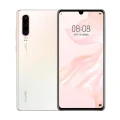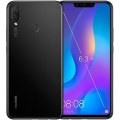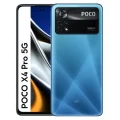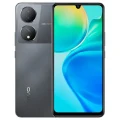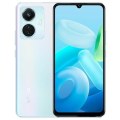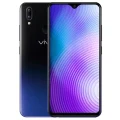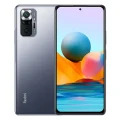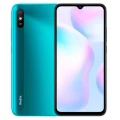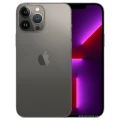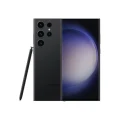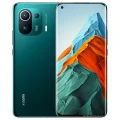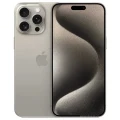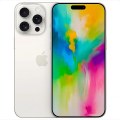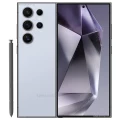- Awesome page
- Latest Mobile
- Smartphones
- Huawei Y7
Huawei Y7
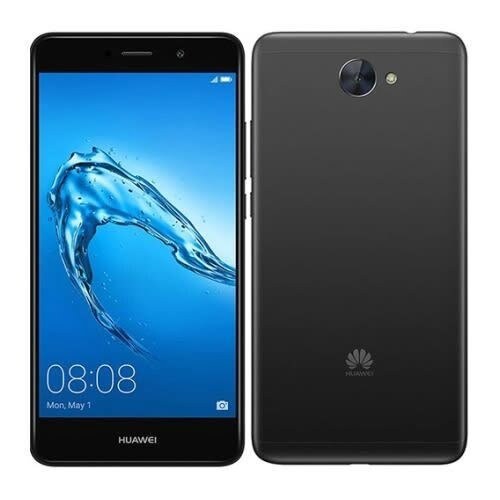


Huawei Y7 Price in Bangladesh
The Huawei Y7 Price in Bangladesh is BDT 13,990. This smartphone features a 5.5-inch IPS LCD display and is powered by a Qualcomm MSM8940 Snapdragon 435 processor clocked at 1.4 GHz. The Huawei Y7 comes with 2GB of RAM and 16GB of internal storage, which can be expanded up to 128GB via external storage. For photography, it has a 12MP rear camera and an 8MP front-facing camera. The device is equipped with a 4000mAh Li-Ion battery, providing long-lasting power. The Huawei Y7 Price in Bangladesh makes it a budget-friendly option with essential features.
Specifications
General
| Model | Huawei Y7 |
| Announced | 2017, May |
| Released | 2017, July |
| Status | Available |
Design
| Dimensions | 153.6 x 76.4 x 8.4 mm (6.05 x 3.01 x 0.33 in) |
| Weight | 165 g (5.82 oz) |
| Colors |
Grey/Prestige, Gold/Silver |
Network
| Technology | GSM / HSPA / LTE |
| 2G Network |
GSM 850 / 900 / 1800 / 1900 - SIM 1 & SIM 2 (dual-SIM model only) |
| 3G Network |
HSDPA 850 / 900 / 1900 / 2100 |
| 4G Network | LTE |
| GPRS <strong>GPRS</strong> (General Packet Radio Service) is a packet oriented mobile data service on the 2G and 3G cellular communication system's global system for mobile communications (GSM), Generally, GPRS is used for the purpose of wireless data transfer, such as sharing pictures and videos or browsing the Internet via a mobile phone connection. | |
| EDGE <strong>EDGE</strong> (Enhanced Data GSM Environment) is a wireless network technology generally considered the next step in the 2G network offers data transfer rates up to four times faster than ordinary GSM networks, Generally, EDGE is used for the purpose of wireless data transfer, such as sharing pictures and videos or browsing the Internet via a mobile phone connection. | |
| Speed | HSPA, LTE |
Display
| Display Type <strong>Display Technology => </strong> A number of display technologies and types used in mobile phones => TFT (Thin Film Transistor), IPS (In-Place Switching), OLED (Organic Light Emitting Diode), AMOLED (Active-Matrix Organic Light-Emitting Diode), Super AMOLED (an even advanced version of AMOLED), Resistive Touchscreen (Resistive touchscreens contain two layer of conductive material with a very small gap between them which acts as a resistance), Capacitive Touchsceen (Capacitive touchscreen technology consists of a layer of glass coated with a transparent conductor) | IPS LCD capacitive touchscreen, 16M colors |
| Size | 5.5 inches, 83.4 cm2 (~71.1% screen-to-body ratio) |
| Resolution | 720 x 1280 pixels, 16:9 ratio (~267 ppi density) |
Camera
Main camera
| Camera Setup | Single |
| Primary <strong>Camera</strong> is able to capture photographs and usually videos, The most important characteristics of a camera are the resolution (measured in megapixels), lens focus type (fixed or automatic), higher megapixel cameras are known to capture higher quality photos, but not always a good measurement of the photos quality. |
12 MP, f/2.2, 1/2.9&amp;quot;, 1.25µm, PDAF |
| Features |
LED flash, HDR, panorama |
| Video | 1080p@30fps |
Selfie camera
| Camera Setup | Single |
| Primary <strong>Camera</strong> is able to capture photographs and usually videos, The most important characteristics of a camera are the resolution (measured in megapixels), lens focus type (fixed or automatic), higher megapixel cameras are known to capture higher quality photos, but not always a good measurement of the photos quality. |
8 MP, f/2.0 |
Hardware
| Chipset <strong>Chipset</strong> is a group of integrated circuits designed to perform one or a more dedicated functions, often with real time computing constraints, Popular smartphones are equipped with more advanced embedded chipsets that can do many different tasks depending on their programming. | Qualcomm MSM8940 Snapdragon 435 (28 nm) |
| CPU <strong>CPU</strong> (Central Processing Unit) mostly known as processors, CPU processes instructions in order to carry out certain functions that make your device operate properly. Processors are often described as the brain of computers, smartphones and tablets, Smartphones and tablets rely on processors to carry out their every task, Processors are an incredibly important factor in selecting any type of computing device, including your smartphone. | Octa-core 1.4 GHz Cortex-A53 |
| GPU <strong>GPU</strong> (Graphics Processing Unit) is a single-chip processor designed to rapidly manipulate and alter memory to accelerate the creation of images in a frame buffer intended for output to a display, This includes things such as lighting effects, object transformations, and 3D motion. | Adreno 505 |
| RAM (Memory) <strong>RAM</strong> (Random Access Memory) is a type of computer memory that can be accessed randomly, any byte of memory can be accessed without touching the preceding bytes that allows information to be stored and accessed quickly from random locations. RAM is the most common type of memory found in computer systems, smartphones, tablets and other electronic devices. | 2 GB RAM |
| Internal Storage <strong>Internal Storage</strong> is a data storage space (flash memory) mostly used in smartphones, tablets and other electronic devices where operating system, apps, music, photos, videos, files and other user data Is stored. | 16 GB |
| Sensors <strong>Sensors</strong> are electronic components that detects and responds to some type of input from the physical environment. The specific input could be light, heat, motion, moisture, pressure and location, The output is generally a signal that is converted to use in computing systems, a location sensor, such as a GPS receiver is able to detect current location of your electronic device. |
Accelerometer, gyro, proximity, compass |
Connectivity
| Bluetooth <strong>Bluetooth</strong> is a wireless communications technology for exchanging data between mobile phones, headsets, computers and other network devices over short distances without wires, Bluetooth technology was primarily designed to support simple wireless networking of personal consumer devices. | v4.1, A2DP, LE |
| Infrared <strong>Infrared</strong> connectivity is an old wireless technology used to connect two electronic devices. It uses a beam of infrared light to transmit information and so requires direct line of sight and operates only at close range. | |
| USB | microUSB 2.0, USB On-The-Go |
| GPS <strong>GPS</strong> The Global Positioning System is a satellite-based radio navigation system, GPS permits users to determine their position, velocity and the time 24 hours a day, in all weather, anywhere in the world, In order to locate your position, your device or GPS receiver must have a clear view of the sky. | Yes, with A-GPS, GLONASS |
| NFC <strong>NFC</strong> (Near field communication) is a set of standards for smartphones and similar devices to establish peer-to-peer radio communications with each other by touching them together or bringing them into proximity, usually no more than a few inches. |
Battery
| Battery Type <strong>Battery Type => </strong> Cell phones run on various kinds of batteries depending on the manufacturer, phone size or shape and features. There are basically four types of cell phone batteries => Lithium Polymer, Lithium Ion, Nickel Metal Hydride and Nickel Cadmium. | Non-Removable Li-Po |
| Capacity <strong>Battery Capacity</strong> is a measure (typically in Amp-hr) of the charge stored by the battery, and is determined by the mass of active material contained in the battery. The battery capacity represents the maximum amount of energy that can be extracted from the battery under certain conditions. | 4000 mAh |
| Charging Charging | Fast battery charging |
Unlocking the Potential of Affordable Excellence with Huawei Y7
Introduction
In a world where premium smartphones often come with premium price tags, the Huawei Y7 emerges as a beacon of hope for budget-conscious consumers and tech enthusiasts. Positioned as an entry-level device with mid-range aspirations, the Huawei Y7 promises a blend of performance, style, and affordability that is hard to overlook.
This review is tailored for those who are on the hunt for a reliable smartphone without breaking the bank. Whether you’re a tech-savvy user looking to explore all that the Huawei Y7 has to offer or a budget-conscious consumer searching for value, this comprehensive guide will provide you with everything you need to know about this intriguing device.
Design and Build Quality
A Closer Look at Design
The Huawei Y7 sports a design that belies its budget-friendly price tag. Constructed primarily from polycarbonate, it features a sleek, glossy finish that feels surprisingly premium. The dimensions are well-balanced, with a comfortable width and height that make it easy to handle. Weighing in at just under 170 grams, the Y7 strikes a good balance between lightweight convenience and substantial feel.
Build Quality Assessment
While the materials used are not as high-end as those found in flagship devices, the build quality of the Huawei Y7 is commendable. It feels sturdy in the hand, with no creaks or flexes that might diminish its durability. The rounded corners and edges contribute to a smooth, ergonomic grip, making it comfortable for extended use.
First Impressions Matter
Upon first glance, the Huawei Y7 impresses with its modern aesthetic. The minimal bezels and dewdrop notch at the top of the display give it a contemporary look that is sure to appeal to users who appreciate design. Despite being a budget device, Huawei has managed to infuse the Y7 with a sense of style that makes it stand out in its price range.
Display and Multimedia Experience
Visual Performance
The Huawei Y7 features a 6.26-inch IPS LCD display with a resolution of 1520 x 720 pixels. While it may not boast the Full HD resolutions of higher-end models, the display offers vibrant colors and decent brightness levels. The viewing angles are respectable, ensuring that images and videos retain their quality even when viewed from the sides.
Multimedia Capabilities
When it comes to multimedia, the Huawei Y7 holds its own. Video playback is smooth, and the screen’s color reproduction enhances the viewing experience. Gaming on the Y7 is enjoyable, thanks to its capable hardware and responsive touch inputs. Although it might struggle with the most graphically demanding games, casual gamers will find plenty to like.
Sound and Entertainment
Audio quality is another area where the Huawei Y7 performs admirably. The single downward-firing speaker delivers clear and loud sound, making it suitable for listening to music or watching videos without headphones. While it may lack the depth and richness of more advanced audio systems, it gets the job done for everyday use.
Camera Quality
Main Camera System
The Huawei Y7 is equipped with a dual-camera setup on the rear, featuring a 13MP main sensor and a 2MP depth sensor. In well-lit conditions, the Y7 captures sharp and detailed photos with accurate colors. The depth sensor adds a pleasing bokeh effect to portrait shots, enhancing the overall photography experience.
Selfie Camera Performance
On the front, the Y7 houses an 8MP selfie camera that performs well for its class. Selfies are clear and vibrant, and the built-in beauty mode can be adjusted to achieve the desired level of enhancement. Low-light performance, while not exceptional, is decent enough for social media sharing.
Special Features
The camera app on the Huawei Y7 offers a variety of features, including HDR, panorama, and a Pro mode for those who want more control over their photography. Video recording is limited to 1080p, but it delivers satisfactory results with good stabilization and clear audio capture.
Performance and Battery Life
Hardware Under the Hood
Powered by the Qualcomm Snapdragon 450 processor, the Huawei Y7 is paired with 3GB of RAM and 32GB of internal storage. While these specs may not sound groundbreaking, they are sufficient for everyday tasks such as browsing, social media, and light multitasking. The device handles these activities smoothly, with minimal lag or stuttering.
Battery Performance
One of the standout features of the Huawei Y7 is its impressive battery life. The 4000mAh battery ensures that the device can easily last a full day of moderate to heavy use on a single charge. For lighter users, it might even stretch to two days. The Y7 supports 10W charging, which, while not the fastest, is adequate for its battery size.
Real-World Usage
In real-world usage, the Huawei Y7 performs reliably. Apps open quickly, and switching between them is generally fluid. While it may not be the ideal choice for power users who demand the highest performance, it is more than capable of handling the needs of the average user.
User Interface and Features
EMUI Customization
The Huawei Y7 runs on EMUI, Huawei’s custom skin over Android 8.1 Oreo. EMUI offers a range of customization options, allowing users to personalize their devices to suit their preferences. The interface is clean and intuitive, with a host of features designed to enhance usability.
Special Software Features
One of the notable features of EMUI is its gesture-based navigation, which provides a more immersive experience by eliminating the need for on-screen buttons. The Y7 also includes useful tools such as a one-handed mode, split-screen multitasking, and a range of power-saving options to extend battery life.
Updates and Support
While the Huawei Y7 may not receive the latest Android updates as quickly as some other devices, Huawei provides regular security patches and performance improvements to keep the device running smoothly. The company also offers excellent customer support, ensuring that users have access to help when needed.
Price and Value Proposition
Competitive Pricing
One of the most compelling aspects of the Huawei Y7 is its pricing. Positioned as an affordable smartphone, the Y7 offers a range of features that are typically found in more expensive devices. This makes it an attractive option for budget-conscious consumers who do not want to compromise on quality.
Value for Money
Considering its design, performance, and features, the Huawei Y7 represents excellent value for money. It manages to deliver a well-rounded smartphone experience without the premium price tag, making it a strong contender in its category.
Target Audience
The Huawei Y7 is ideally suited for young professionals, students, and anyone looking for a reliable smartphone that won’t break the bank. Its balance of style, performance, and affordability makes it a versatile choice for a wide range of users.
Conclusion
Final Thoughts
In conclusion, the Huawei Y7 is a testament to how far budget smartphones have come. It offers a blend of design, performance, and features that make it an excellent choice for those looking to get the most out of their money. While it may not rival flagship devices in every aspect, it provides a compelling package that is hard to beat at its price point.
Who Should Consider the Huawei Y7?
If you’re a smartphone enthusiast looking for a secondary device, a tech-savvy user in need of an affordable yet capable phone, or a budget-conscious consumer seeking value, the Huawei Y7 is worth considering. Its strengths lie in its design, battery life, and overall usability, making it a solid choice for various needs.
Join the conversation by sharing your thoughts or questions in the comments below. We would love to hear your experiences with the Huawei Y7 or any other budget smartphones you recommend.
